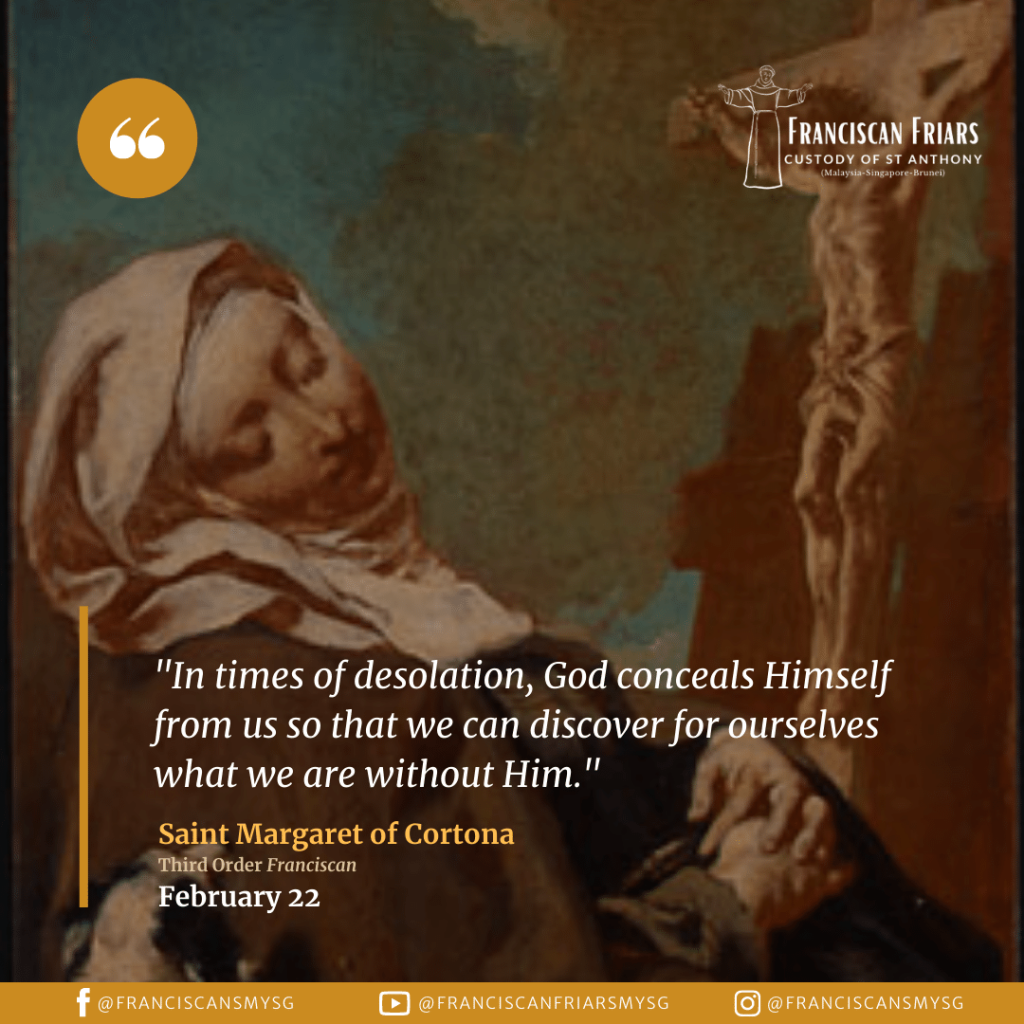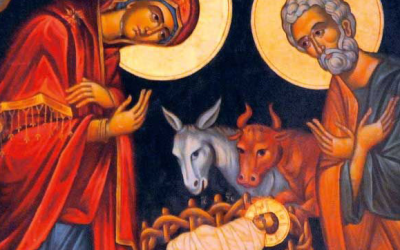
St. Margaret was raised in a poor family in Tuscany. Following the death of her mother when Margaret was just eleven, a new stepmother turned her out of the house. Eventually, with few apparent options, she eloped with a young nobleman, who kept her as his mistress. Though she bore him a son, he would not marry her. When he was eventually murdered, Margaret took this as a sign of God’s judgment on her life.
Penniless, she returned to her father’s house, but he would not take her in. Now homeless as well as destitute, she made her way to Cortona, where she had heard of the compassion of the Franciscan friars. She introduced herself by walking through town with a rope around her neck, a sign of her penitence. The friars quickly urged her to quit this spectacle and also curbed her proclivity for extremes of asceticism. Eventually she was accepted as a Franciscan tertiary. With other women she formed a nursing community, caring for the sick and the poor. Nevertheless, stories of her former life continued to generate gossip. She observed, “I see more Pharisees among Christians than surrounded Pilate.”
Over time, as reports spread of her holiness and her purported miracles, as well as her private colloquies with Christ, Margaret attracted more positive attention. The Franciscans urged her to embark on a public crusade to call sinners to conversion. Penitents from all over Italy, and as far away as France and Spain, made their way to Cortona to hear her spiritual discourses.
She died on February 22, 1297. She was canonized in 1728.
Show now that thou art converted; call others to repentance…. The graces I have bestowed on thee are not meant for thee alone.
—A message from the Lord to St. Margaret of Cortona
Source : The Franciscan Saints (Franciscan Media)





0 Comments